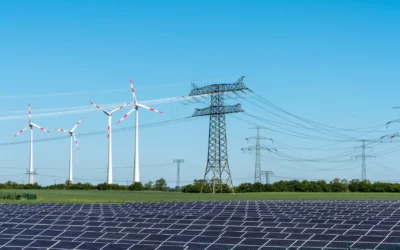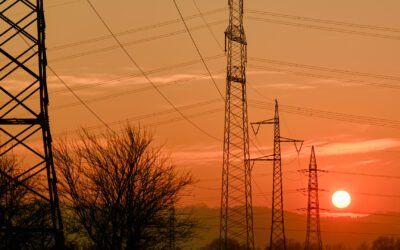- Majority of the switchgear demand in the North American region is generated by the United States accounting for 75% followed by Canada (15%) and Mexico (10%).
- As per the assessments carried out by the U.S. Department of Energy, power failures could cost as high as USD 70 billion annually to the U.S. economy.
- According to the International Energy Agency, the installed base of wind and utility scale solar in the U.S. is expected to increase with a CAGR of 8% and 20%, respectively, from 2021-2026.
- Investments made under the Bipartisan Infrastructure Law and the sustained growth in the installed base of renewables will drive the growth of the switchgear market in the U.S.
The switchgear is an essential component of any modern power system across the world, ranging from power generation facilities to transmission and distribution installations. This article discusses key insights regarding the switchgear market of the United States including its driving factors, key market players, and present and future trends that the market is expected to follow.
Key Insights Regarding the US Switchgear Market
As far as the demand of switchgear in the North American market is concerned, majority of the demand in this region is generated by the U.S., which accounts for 75%, followed by Canada (15%) and Mexico (10%).
The switchgear market in the U.S. is mainly driven by a mix of new installations and replacements in existing infrastructure. Additionally, the U.S. is the biggest market of outdoor switchgear equipment including outdoor circuit breakers and overhead reclosers in the world. It has an annual market of around 9000 outdoor circuit breakers (unit sales) and 20,000 MV (unit sales) reclosers where ABB, Siemens, Eaton, Mitsubishi Electric, and Myers Power Products are the key players for the MV outdoor circuit breakers segment in the U.S.

Figure 1: Ranking of key players for MV outdoor circuit breaker segment in the US market.
Source: Power Technology Research

Figure 2: Switchgear Demand in the North American Market.
Source: Power Technology Research
Predominantly, it is observed that in the U.S. market, air-insulated switchgear (AIS) substations are installed instead of gas-insulated switchgear (GIS) substations because they are economical to install and space is generally not a constraint in the U.S. In certain regions, for instance AESO, CAISO and NYISO, the ISOs are projected to have a healthy CAGR in the forecast period from 2022-2026 for HV GIS circuit breaker installations which is a deviation from general behavior observed in the US.
The main factor in the regions mentioned above driving the demand for HV GIS circuit breakers is offshore wind generation. Switchgears are installed in the base of wind turbines, and so must be compact enough to fit through the door. AIS switchgear is not compact enough for offshore wind applications; GIS is better suited. In the case of off-shore wind turbine installations, additional reliability is also required. For example, in the case of harsh weather conditions, offshore turbines may not be accessible for days or weeks for required operations management and maintenance.
It is significant to note that there is a growing tendency in some regions of the U.S. to replace the switchgear in the existing AIS substations with GIS. GIS is a newer technology as compared to AIS which is one of the reasons why GIS is retrofitted in AIS substations given the space constraints associated with AIS.
Looking Ahead
As per the assessments carried out by the U.S. Department of Energy, power failures could cost as high as USD 70 billion annually to the U.S. economy. To deal with this, the Bipartisan Infrastructure Law has set aside more than USD 65 billion aimed at upgrading the power infrastructure. Thousands of miles of new transmission lines are needed to help integrate renewables and clean energy with the grid. This will be followed by the funding of new programs which will not only assist in the development and deployment of state-of-the-art clean energy technologies but in achieving the country’s zero net emissions target.
According to International Energy Agency, the installed base of wind and utility scale solar in the U.S. is expected to increase with a CAGR of 8% and 20%, respectively, from 2021-2026. Power Technology Research believes that the investments made under the Bipartisan Infrastructure Law and the sustained growth in the installed base of renewables, specifically wind and utility scale solar, will drive the growth of the switchgear market in the U.S.
High Voltage Switchgear Service Overview
The research presented in this article is from PTR's High Voltage Switchgear service. For information about this service please submit a request shown below.
Contact Sales:
More about our:
High Voltage Switchgear Market Research
Recent Insights
Europe’s Switch to Sustainable Power: The Rise of Solid-Insulated Switchgear
As Europe intensifies its shift towards sustainable energy solutions, Solid Insulated Switchgear (SIS) is emerging as a key technology in the...
US Elections: Consequences of a Second Trump Presidency for Energy Sector
The US is making strides to move away from fossil fuels and eventually decarbonize the energy sector. The White House aims to achieve 80% renewable...
Sustainability Across Sectors: Highlights from GreenTech Festival 2024
Recently, I had the privilege to attend and present at the Greentech Festival, an excellent event in the realm of sustainability. This influential...


